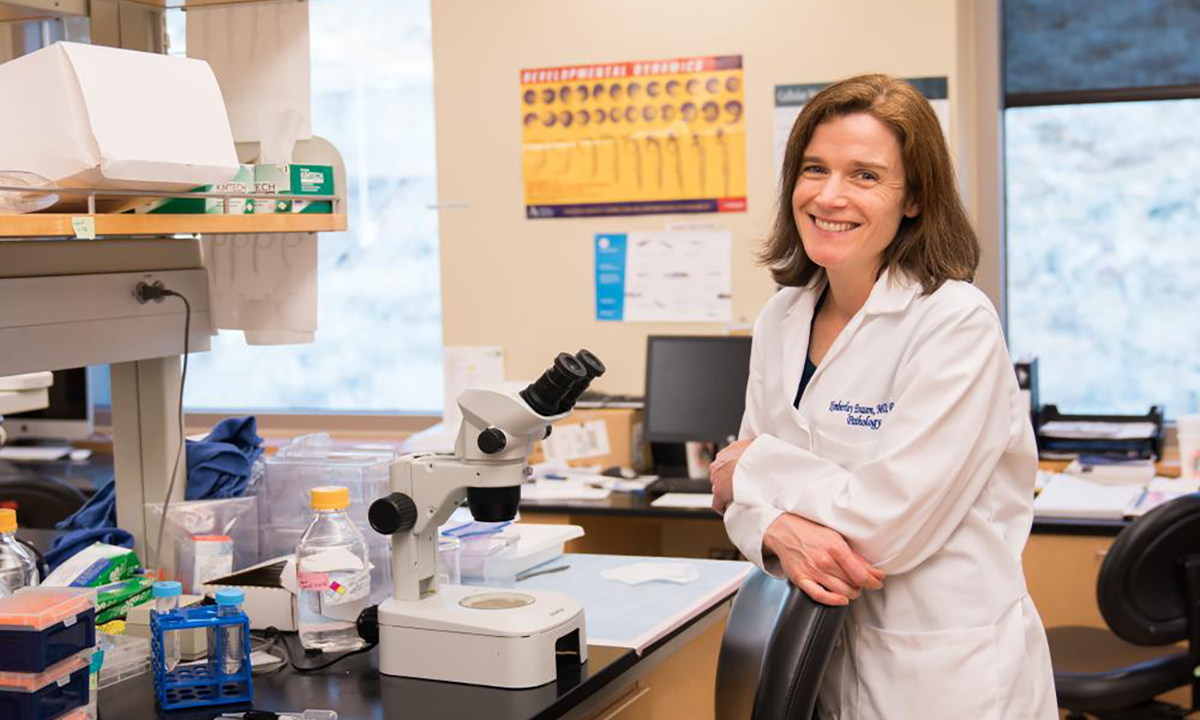
Scientists supported in the past by the foundation include 12 who received the Nobel Prize. Others are heads of cancer centers and leaders of renowned research programs.
SALT LAKE CITY—Kimberley Evason, MD, PhD, and Gregory Ducker, PhD, are two of only 12 scientists nationwide to receive the 2020 Damon-Runyon-Rachleff Innovation Award for their liver cancer research.
The pair will use the grant of $400,000 over two years to research liver cancer metabolism.
“The Damon Runyon Cancer Research Foundation is a fantastic organization that I’ve looked up to throughout my career. It focuses on excitement and innovation in cancer research and on young, early investigators,” Evason said. “It is incredibly committed; 100% of its donations go to research.”
Evason is medical director of anatomic pathology at ARUP Laboratories and, along with Ducker, is a Huntsman Cancer Institute (HCI) researcher. Each holds a faculty position at the University of Utah; Evason is an assistant professor of pathology and Ducker is an assistant professor of biochemistry.
Evason’s research involving zebrafish models to study liver cancer and Ducker’s experience working with mice and tissue culture to study metabolism enable an ideal collaboration to research liver cancer metabolism. Liver cancers have a unique lipid (fat) metabolism, and Evason and Ducker are researching whether directly targeting specific types of lipids can significantly limit liver cancer growth and development.
Advantages of the Zebrafish Model
Evason is an expert in clinical and diagnostic issues surrounding hepatocellular carcinoma (HCC), the most prevalent type of liver cancer and the most common cause of cancer-related death in people with cirrhosis. “Liver cancer is a very deadly cancer and difficult to treat, partly because the tumors are very genetically complex,” Evason said.
With zebrafish, she can observe development in translucent embryos and larvae, and note any developing tumor because of abdominal enlargement, then confirm it by histology—the microscopic study of tissues.
These fish are ideal for vertebrate scientific research because they develop organs in the same way as humans, but much faster— their basic body plan including most major organs is established by the time they are two days old. And 70% of zebrafish genes are related to similar genes in humans, and 80% of the disease-causing genes in humans have at least one related gene in zebrafish.
Scientists supported in the past by the foundation include 12 who received the Nobel Prize. Others are heads of cancer centers and leaders of renowned research programs.
The Surprise
Ducker and Evason learned they were finalists in October. They flew to New York in November, where a panel of leading cancer researchers interviewed them. “It was intimidating, but exciting, too,” Evason said.
According to the foundation’s website, it funds, “exceptionally creative thinkers” who pursue "high-risk, high-reward” ideas. Scientists supported in the past by the foundation include 12 who received the Nobel Prize. Others are heads of cancer centers and leaders of renowned research programs. Each of its award programs is extremely competitive, with fewer than 10% of applications funded.
“I would like to thank the Damon Runyon Cancer Research Foundation for granting us this award,” Ducker said in a HCI press release. “It has an amazing track record of identifying groundbreaking science.”
ARUP Media Contact:
Peta Owens-Liston, 801-583-2787 ext. 3635, peta.liston@aruplab.com
Related Reads:
New Study Shows Melanoma Can Spread without Tumor Growth
When Your Own Blood Turns on You: A Journey of Endurance through Multiple Myeloma
Putting the Precision in Medicine: Imatinib First in a Series of Cancer-Drug TDM ARUP Plans
















